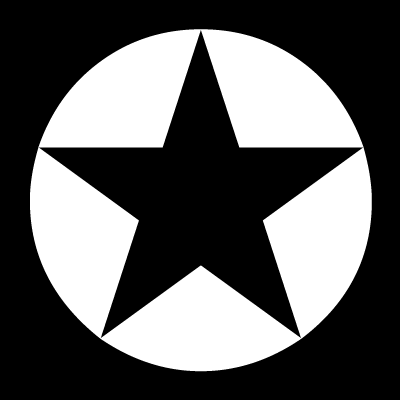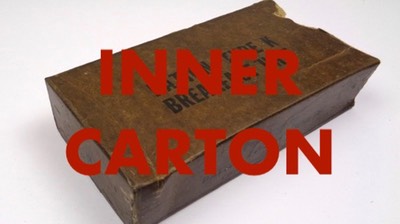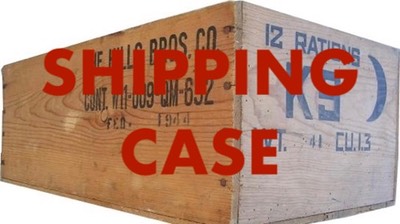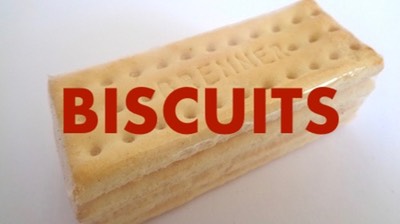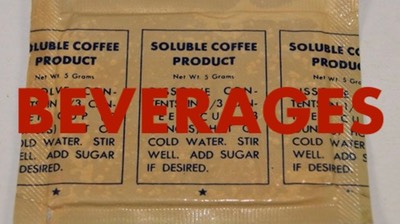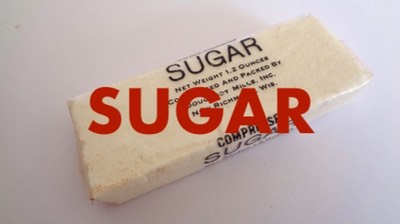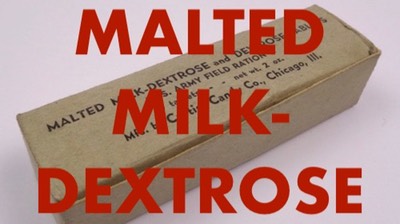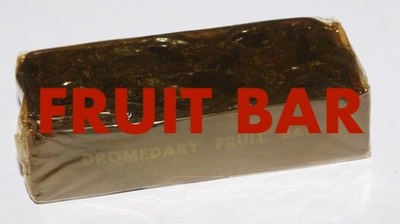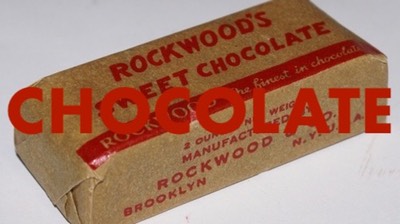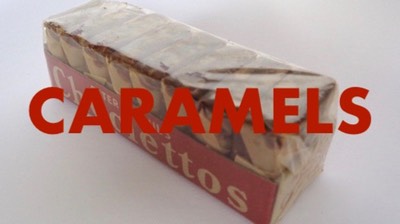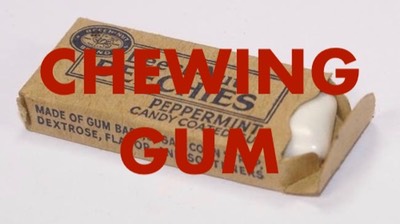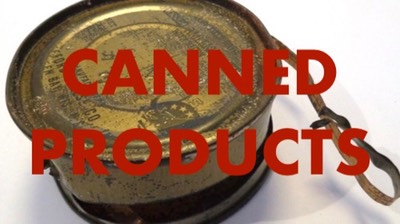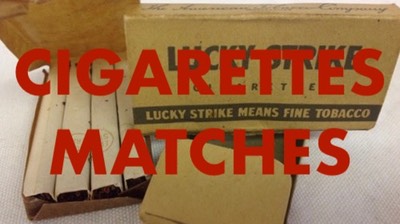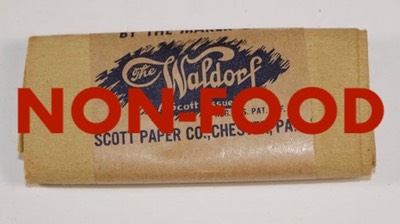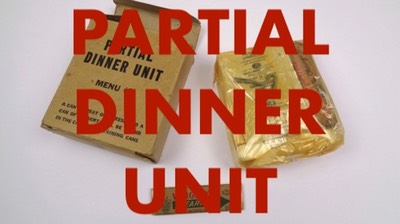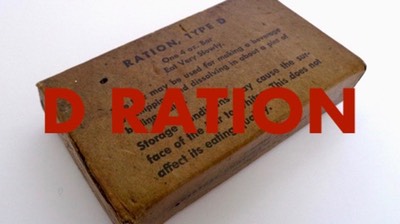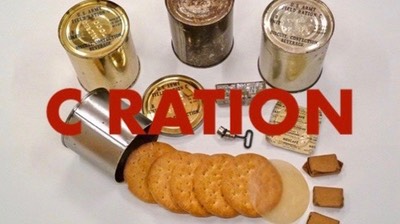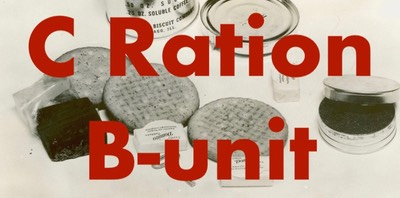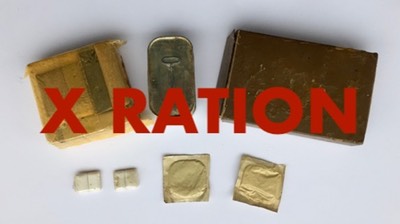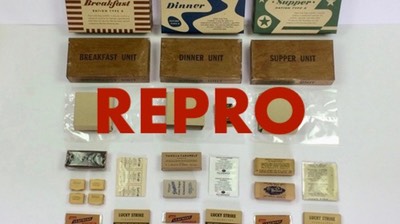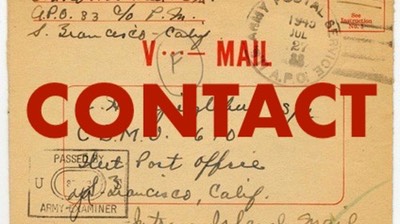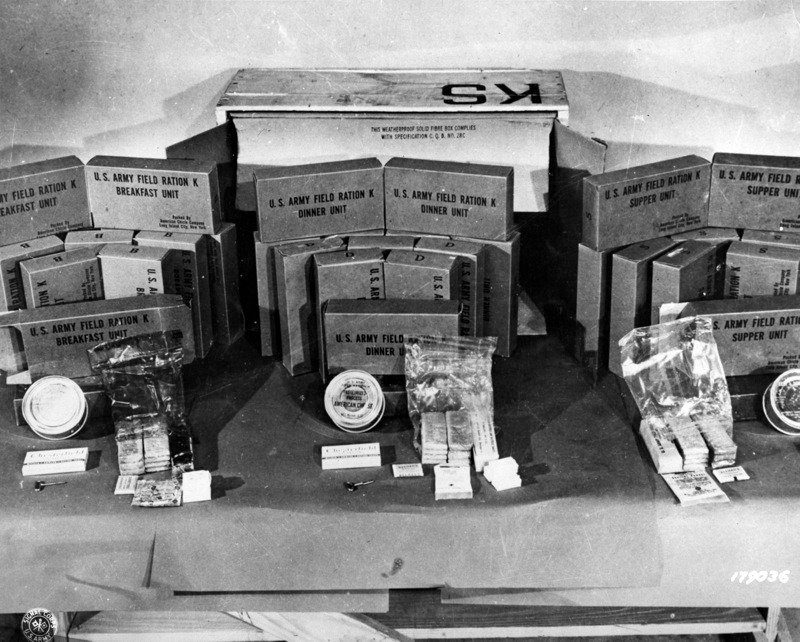
The "frilliness" of the ration has been defended as follows: "While this ration has seemed unnecessarily complex to some, the variety contained in it is deliberate. No simple ration has yet been found which did not became tiresome within a few days that the test subjects did not eat sufficient to meet their nutritional requirements"
As already mentioned in the Outer Carton chapter, I have made a distinction between the different designs of the outer carton: the experimental K Ration and four different main types (with two sub types).
In this chapter I will explain the compositions of the contents of the units, according to the types of outer carton design.
Where possible I have illustrated the compositions.
Experimental K Ration
Although officially adopted and standardized in November 1941 as the U.S. Army Field Ration K, this version was only produced in small numbers for field tests. For its first field trail, only 6000 rations were produced.
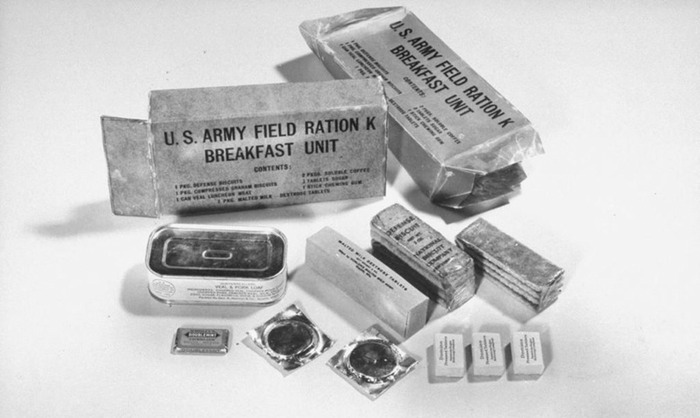
Breakfast unit:
- Defense biscuits
- Graham biscuits
- can Veal Luncheon meat
- Malted Milk Dextrose tablets
- 2 packages of Soluble Coffee
- 3 Sugar tablets
- Chewing gum
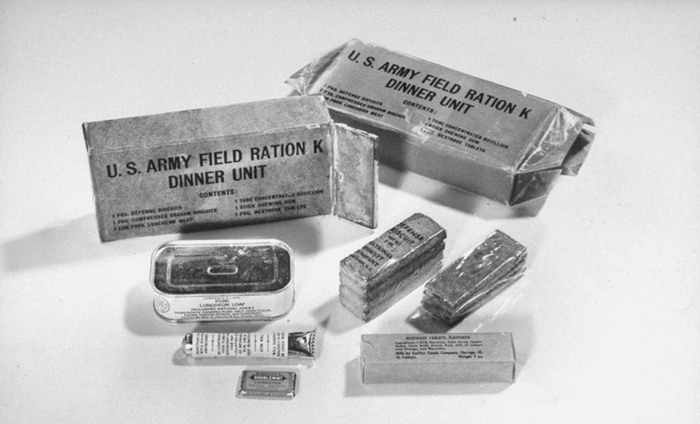
Dinner unit:
- Defense biscuits
- Graham biscuits
- can Pork Luncheon meat
- Dextrose tablets
- tube of Bouillon paste
- Chewing Gum
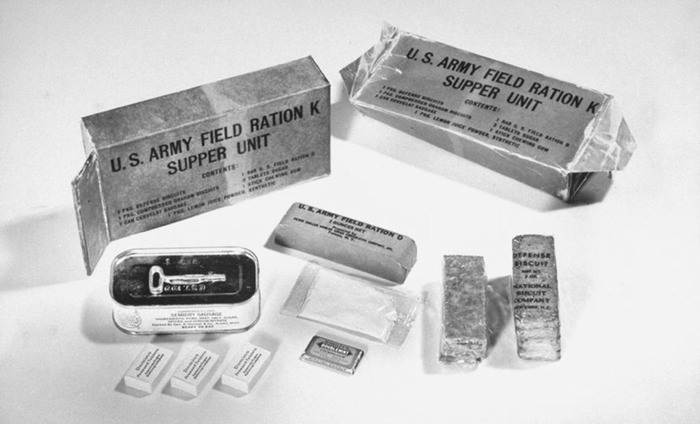
Supper unit:
- Defense biscuits
- Graham biscuits
- can Cervelat Sausage
- D-bar
- Lemon juice powder
- 3 Sugar tablets
- Chewing Gum
Type I
In 1942 the new K Ration was procured on limited basis only for field trials, mass production went into high gear in the fall of 1942. Due to the many changes, the early production of the K Ration is printed only with the nomenclature and unit on the outer carton. The confections are of the long variety (3 15/16"). Cigarettes are included from the start.
Early Breakfast units contained a package of 15 Malted Milk-Dextrose and Dextrose tablets, and the Dinner unit contained a package of 15 flavored Dextrose tablets.
Due to the unpopularity of the Dextrose tablets a Fruit Bar was substituted for the tablets in the dinner unit. Soon after, the Malted Milk-Dextrose and Dextrose tablets are switched with the Fruit Bar.
The Supper unit contained three sugar tablets as well. They were not intended for sweetening the bouillon drink, though. The idea of including sugar was to sweeten the chocolate drink made with the D-bar.
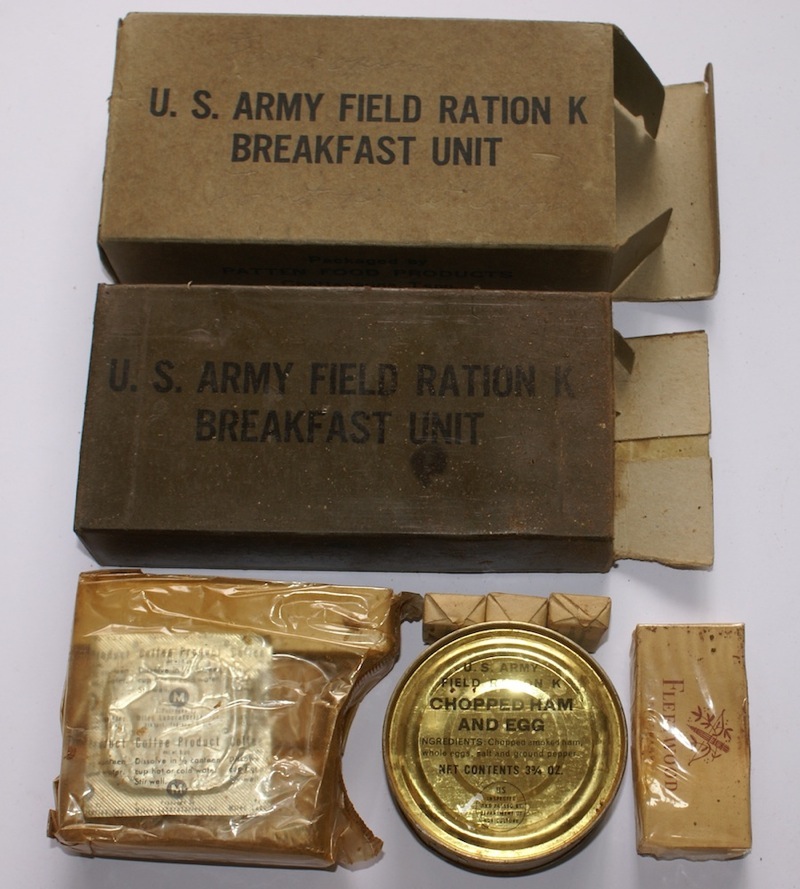
A K Ration containing a fruit bar that is packaged in cardboard box. Note that the three sugar tablets are not packed inside the cellophane bag, but the chewing gum is. (photo: 1944Supply)
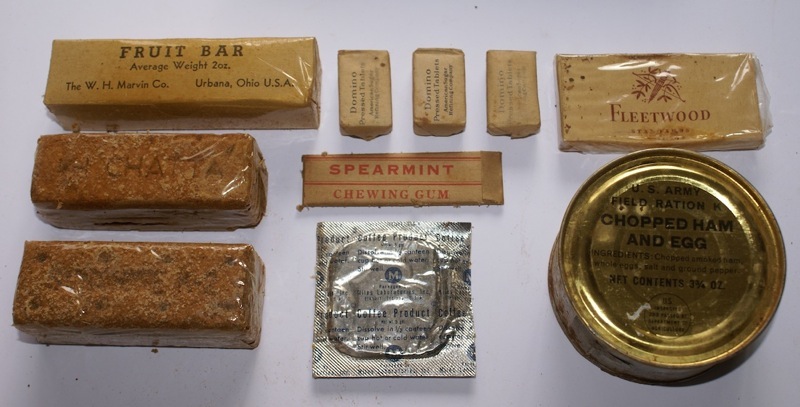
The components af the Breakfast unit shown above. (photo: 1944Supply)
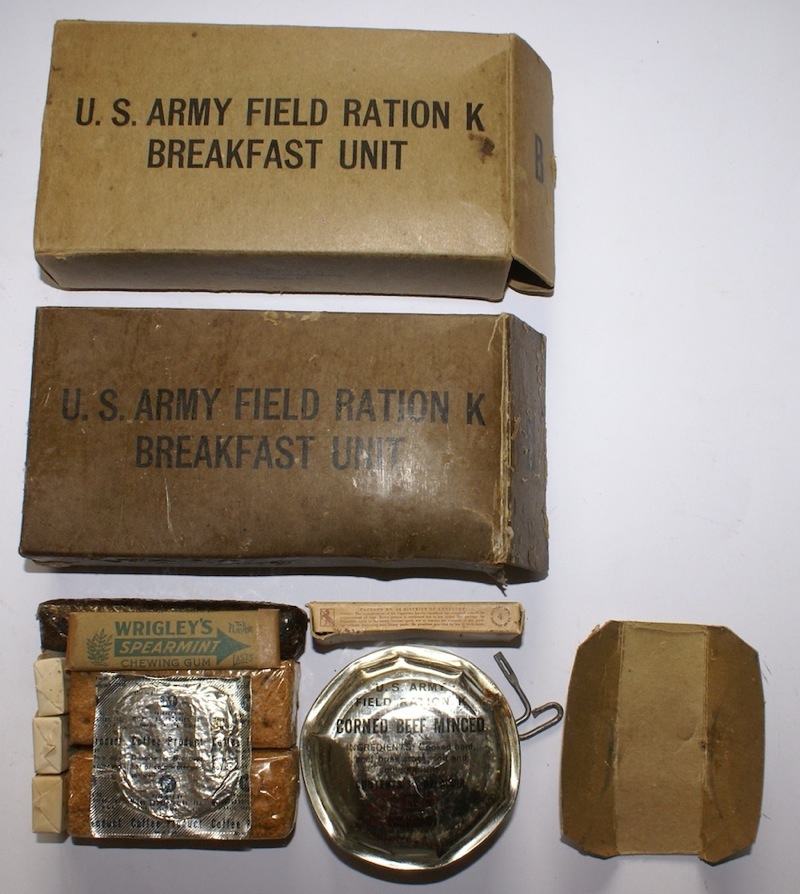
Another Breakfast unit containing the Fruit Bar. Note the early protective cardboard for the can. The chewing gum was packed inside the cellophane bag. (photo: 1944Supply)
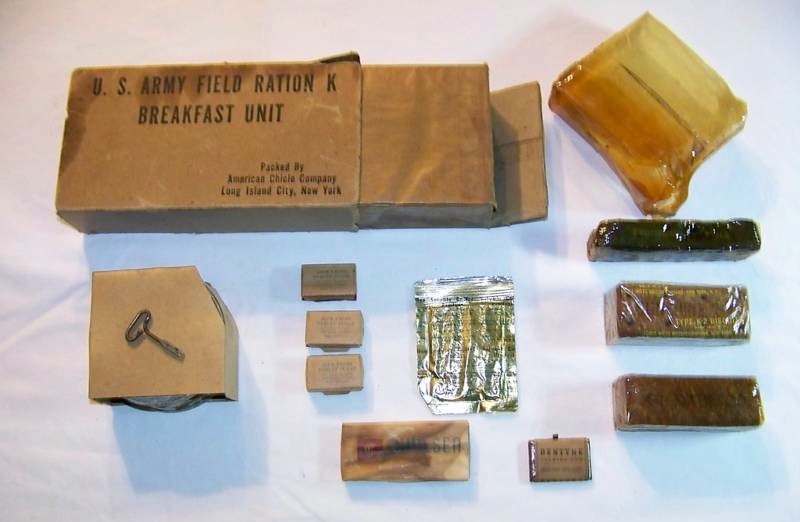
A Breakfast unit that is basically the same as the one above, but now with the first type of protective sleeve for the can. Packed by the Chicle Co., it contains Dentyne gum.
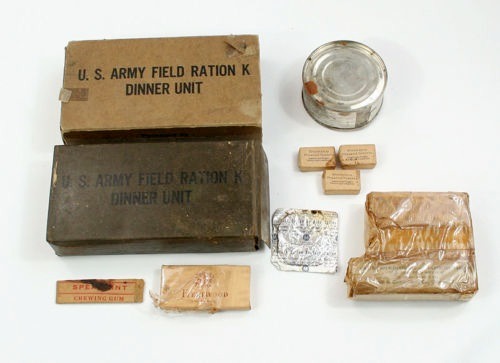
An early Type I Dinner unit that has the three sugar tablets packed separately from the other components in the cellophane. Note the protruding Malted Milk-Dextrose and Dextrose Tablets package. (The coffee is not original to this Dinner unit and should be an envelope of Lemon Juice powder.)
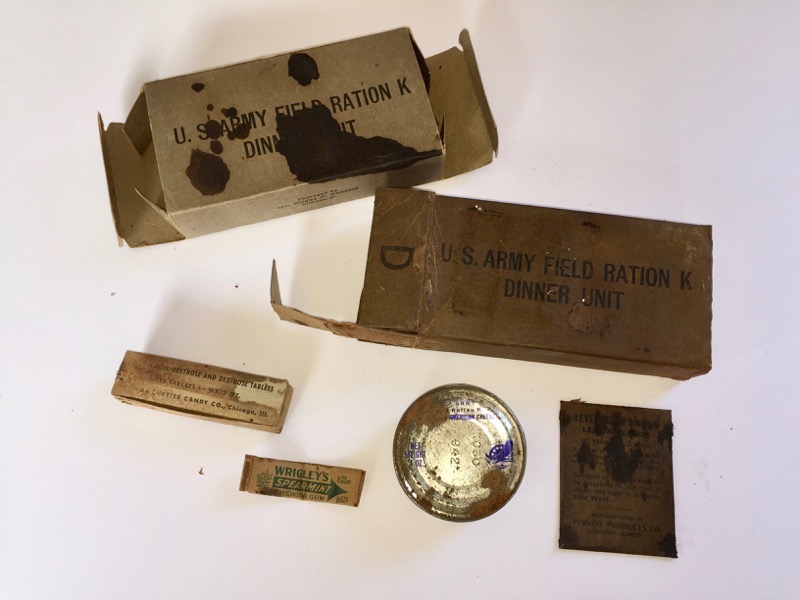
A Type I Wrigley’s packaged Dinner unit with some of its original components. Of special interest is the Lemon Juice powder sealed in a kraft-paper envelope.
Type II
In Februari of 1943 the addition of instructions on its front panel of the outer carton was approved.
As of March 1943, all confections were shortened to 3 1/8".
The Malted Milk-Dextrose and Dextrose tablets were renamed Malted Milk-Dextrose and Dextrose Candy. In the new 3 1/8" packages there fitted 16 tablets.
Inclusion of a matchbook in one of the units was approved. The matches were already included on the production line before official specifications were drawn up, resulting in the inclusion of the matchbook in the Supper unit sometimes instead of the Dinner unit. The type II is only produced for three to four months.
The Supper unit still contains three sugar tablets. Later, shortly before the introduction of the toilet paper with Type IIIa, these were omitted.
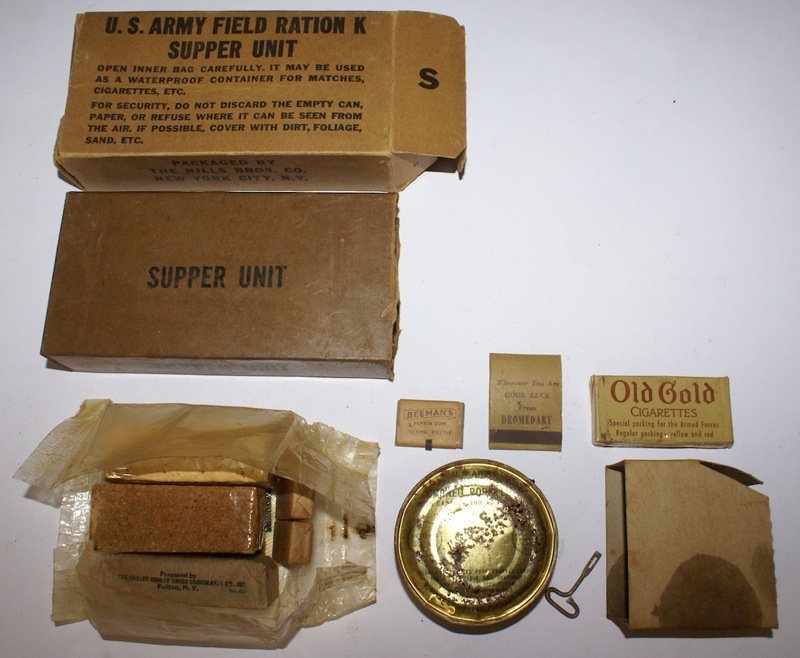
A Supper unit packaged by the Hills Brothers Company, that includes a matchbook. (Not listed on the back of the outer carton.) The can is dated 3-43. Note that there are three sugar tablets as well. (photo: 1944Supply)
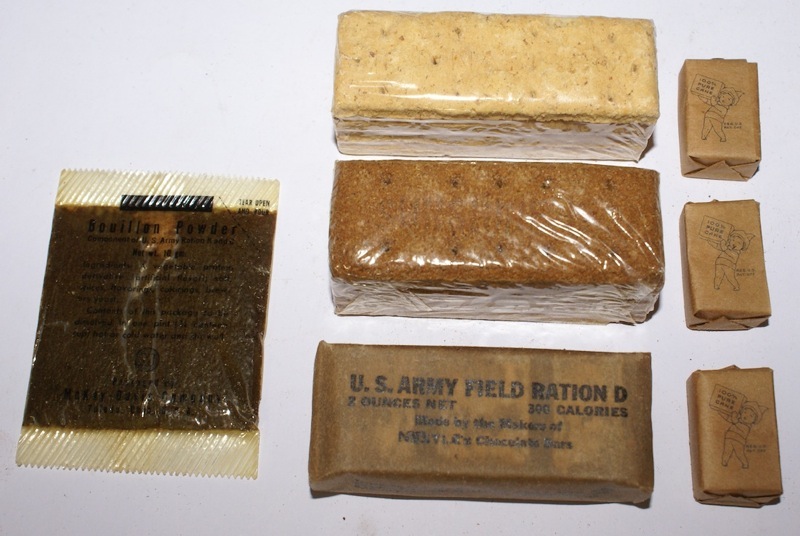
A closer look at the components from the Supper unit shown above. (photo: 1944Supply)
Type IIIa
The U.S. Army decided on standardization of all the field rations in its inventory. The Mountain Ration, Jungle Ration and the 5-in-1 Ration were discontinued and superseded by the 10-in-1 Ration. From May/June 1943 all rations nomenclatures became the "Ration, Type …". This was also applied to the K Ration and the printing on the outer carton was changed accordingly.
In July 1943 a roll of toilet paper was added to the Supper unit, Soon after, the number of sugar tablets in the Breakfast and Dinner units were increased from three to four tablets.
The unpopular Malted Milk-Dextrose and Dextrose Candy were substituted by hard candies. Production facilities of the hard candies weren't considered adequate, however, and an alternative was found in new caramel candies (Choclettos) in the summer of 1943.
In the fall of 1943 the D-bar was replaced with a Sweet Chocolate bar.
Orange juice powder is sometimes included as an alternative to the lemonade powder. The sugar in the Dinner units could either be four individually wrapped tablets, or a package of equal amount (23 grams) of granulated sugar.
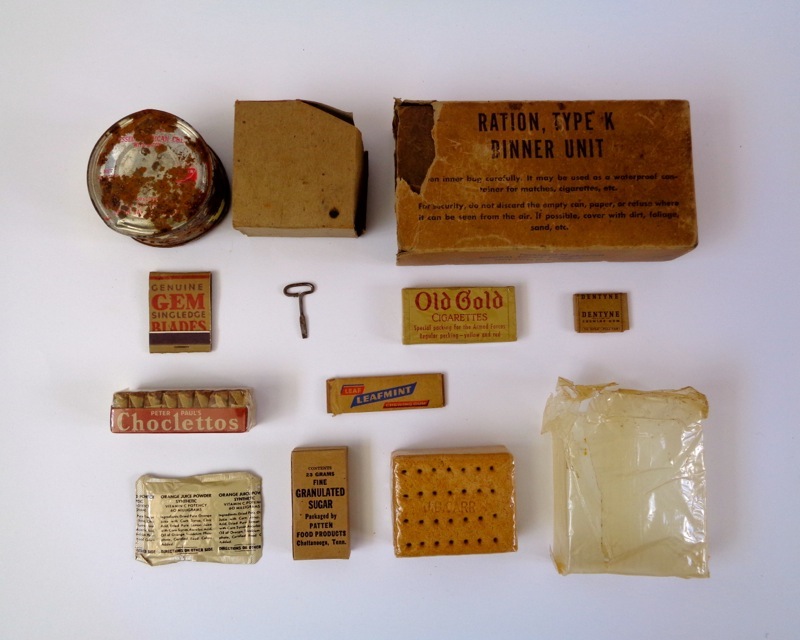
A late 1943 Dinner unit showing progressive changes. The biscuits here is a package of the new type "C" square. The beverage is orange juice powder. Note the GEM's razor blade advertisement on the matchbook cover. Erroneously there were two types of chewing gum inserted in this Dinner unit.
Type IIIb
A warning against malaria was approved for the K Ration's outer carton in February 1944. This warning was later also printed on the matchbook cover, although the blank matchbooks are also still used.
The contents basically remain the same as with the Type IIIa.
Although the change to camouflaged coated cans was approved in late 1943, clear lacquered cans are still used due to existing stock.
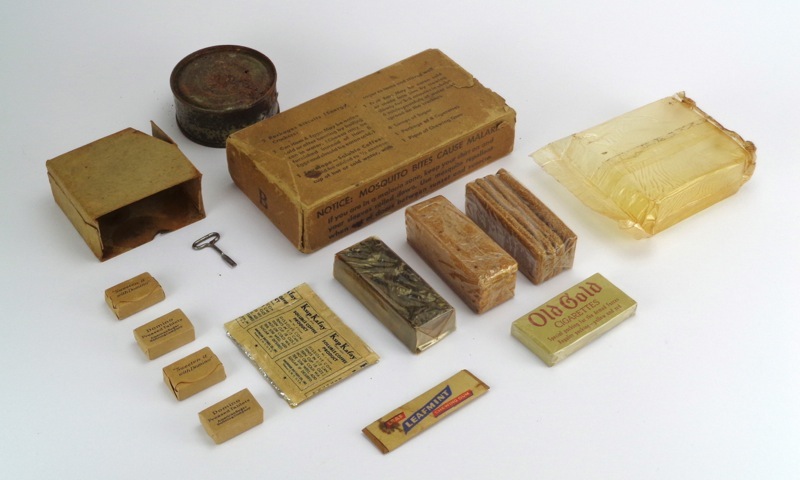
An early 1944 Breakfast unit with the malaria warning on one of the side panels.
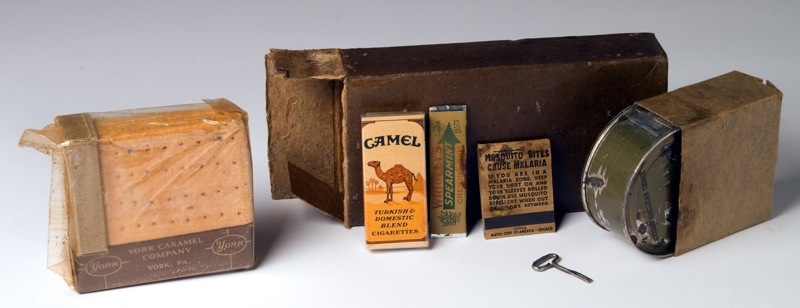
Although the outer box is missing here, it is of the typical composition for the Type IIIb/IVa with the York Milk Caramels. Note that the biscuits is a package of the square type.
Type IVa
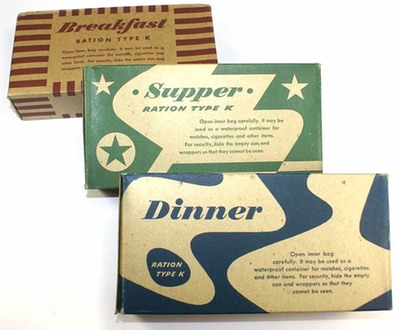
A radical change in the packaging of the K ration was the use of different colors and design for easy identification of the units. The new designs went into production May 1944.
The composition of the contents of the K ration didn't changed much and is basicaly the same as the Type III ration.
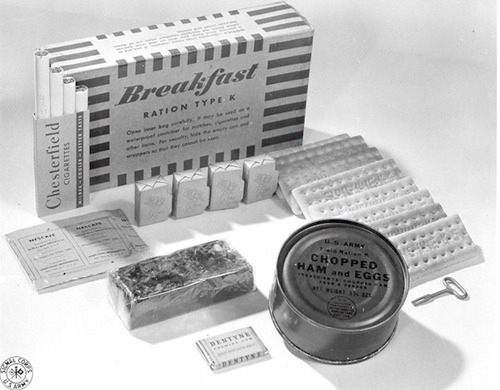
The Breakfast unit contained the two packages, each with a different type of small biscuits. Coffee with four sugar tablets, the fruit bar, chewing gum and cigarettes. A can containing an egg product, here Ham and Eggs, is of the new camouflage coated production.
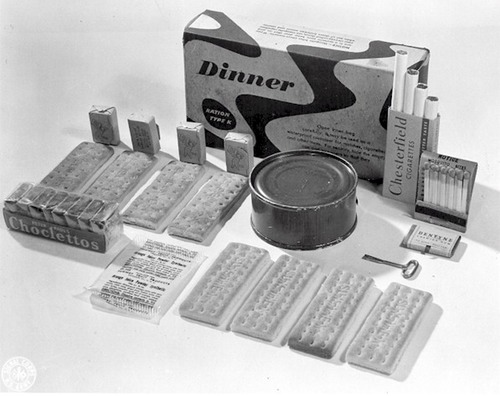
The new Dinner unit is basicaly the same as the Type IIIa shown above. This particular unit still uses the four individually wrapped sugar tablets instead of the new 23 grams package and the orange juice powder is sealed in a clear cellophane envelope.
The matchbook cover carries the warning against malaria and the can is also camouflage coated.
As an alternative to the Choclettos, York Milk Caramels are also used.
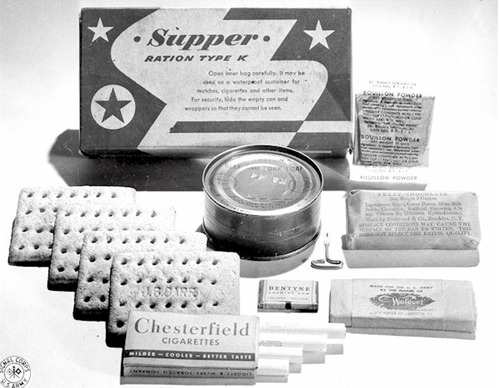
The biscuits used in the Supper unit are now predominantly of the square type.
The bouillon is still packaged in a clear cellophane envelope. The confection is the Sweet Chocolate bar. The Beef and Pork Loaf is also packed in a camouflaged can.
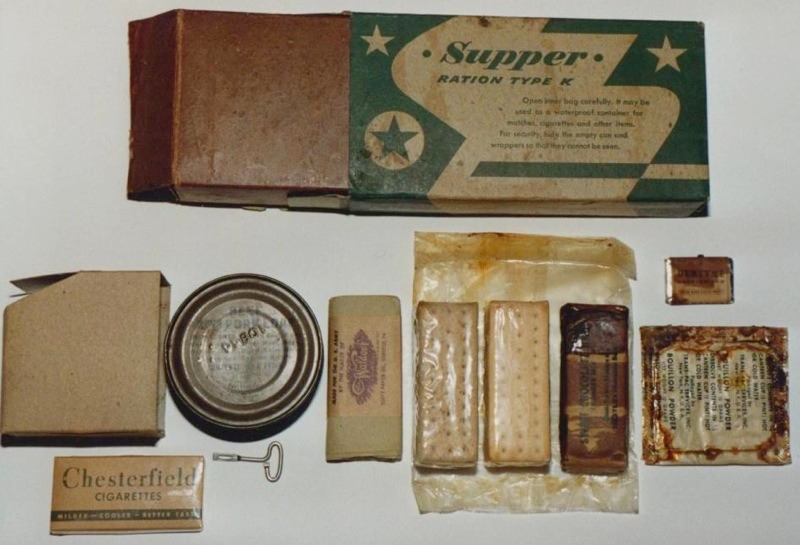
A Supper unit with the older notched style sleeve for the can, but the bouillon is packaged in an aluminum laminate envelope.
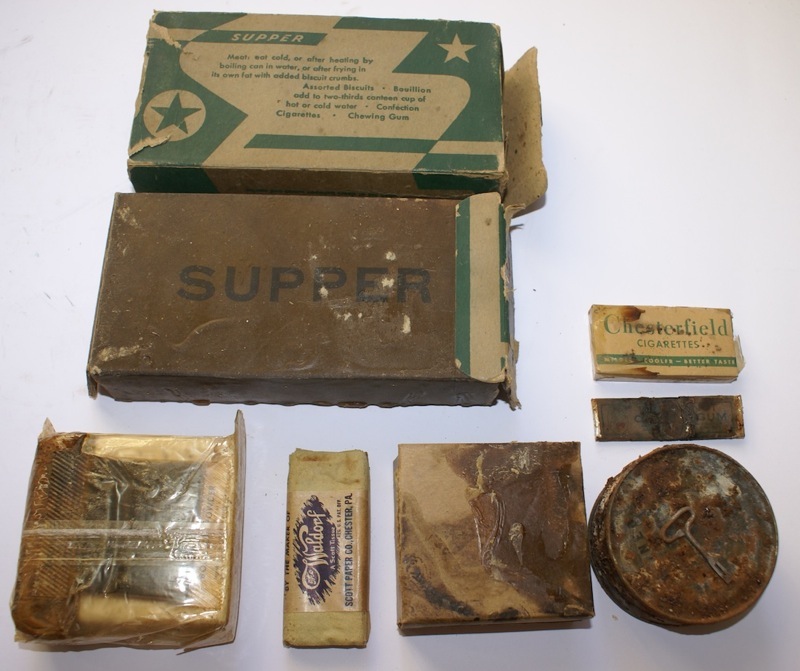
A type IVa Supper unit with a cellophane bouillon envelope. (photo: 1944Supply)
Type IVb
In the fall of 1944, new specifications were issued on October 31, the composition changed. This is a radical change from the composition of the previous types. In all units a wooden spoon is now included.
A compressed cereal bar was developed and replaced a package of biscuits in the Breakfast unit. Due to the smaller size of this cereal bar, the roll of toilet paper is now included in the breakfast unit. The back panel now includes instructions how to prepare the cereals. An extra envelope of soluble coffee product is added. The number of sugar tablets, however, is not increased.
The caramels in the Dinner unit are replaced with a candy bar, usually a Milky Way bar, or a kind of chocolate fudge bar. The 23 grams sugar package is replaced with an 1.2 oz. compressed block of granulated sugar. As an alternative to the lemon and orange juice powders, grape juice powder might be used.
To supplement the bouillon drink in the Supper unit an envelope of soluble coffee product is included. To sweeten the coffee, a package of 23 grams of granulated suger is included, taking the place of the roll of toilet paper. The 2-ounce Sweet Chocolate bar is replaced with a package of caramels, either chocolate or vanilla flavor. Back panel now lists both coffee and bouillon.
In August of 1945 a small vial holding four salt tablets is included in the Dinner unit. The list on the outer carton now includeds the text "salt tablets". The confection of the Supper unit is now either one of the two flavors of caramels, or two 1-ounce chocolate bars. In the fall of 1945 the matches were moved from the Dinner unit to the Supper unit.
The Type IVb being the final version and produced until 1946, this is the more often found intact version today.

An early 1945 Kellogg's Breakfast unit packed in a Type IVa outer carton.
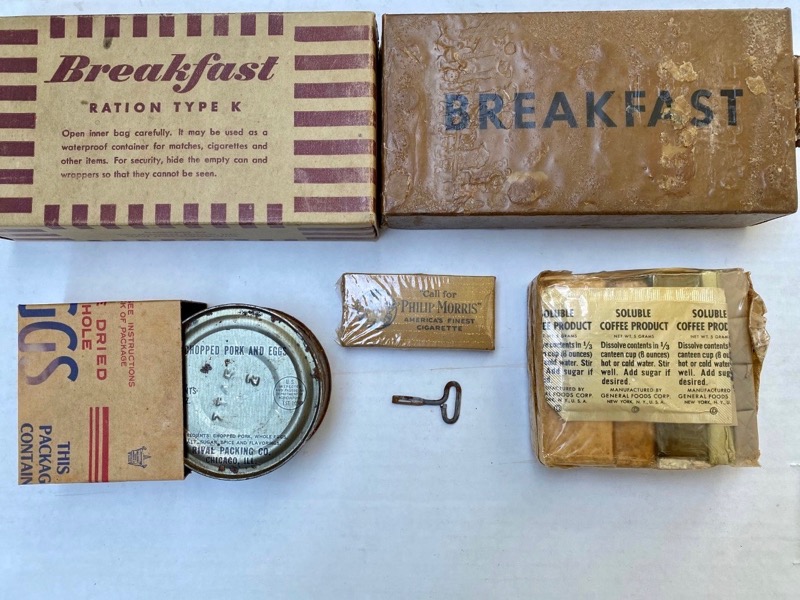
Pictured here is a Breakfast unit packed by Doughboy Mills Inc. Note that the toilet paper is placed inside the bag between the fruit bar and the sugar cubes. A small aluminium foil wrapped package of two PK chewing gum tablets can be seen at one end of the fruit bar. The can sleeve is also noteworthy. (photo courtesy S.J. Schmalstieg)
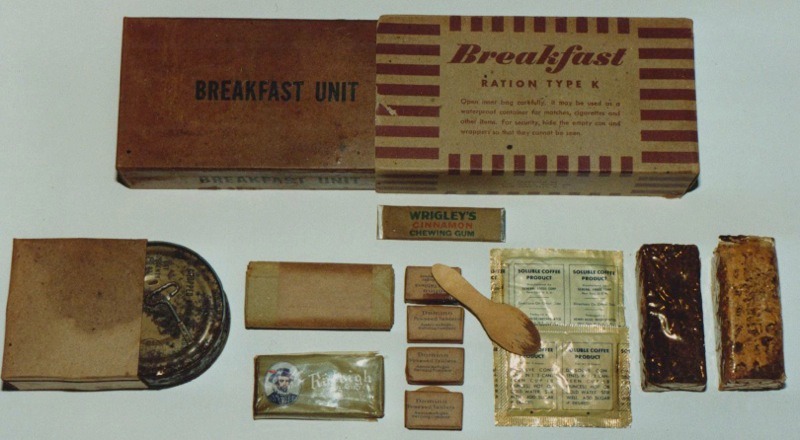
A Type IVb Breakfast unit, missing here is the compressed cereal bar.
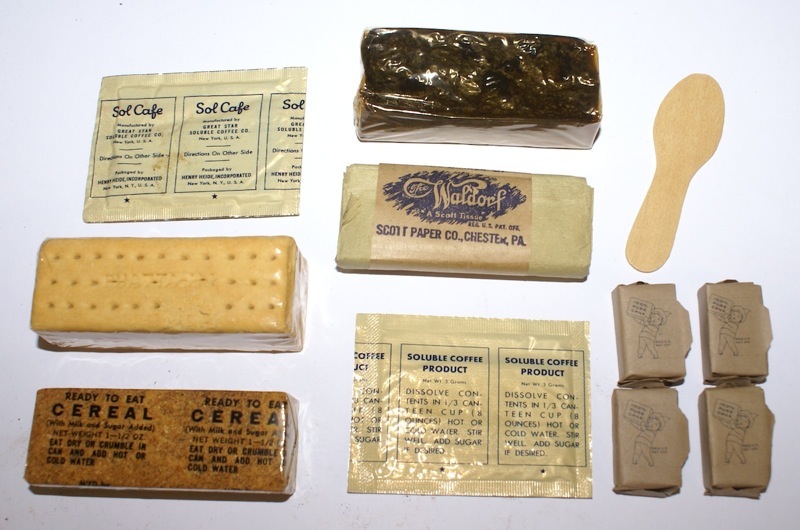
Contents from a Type IVb breakfast unit. There were two different coffee brands included, both packaged by Henry Heide Inc. (photo: 1944Supply)
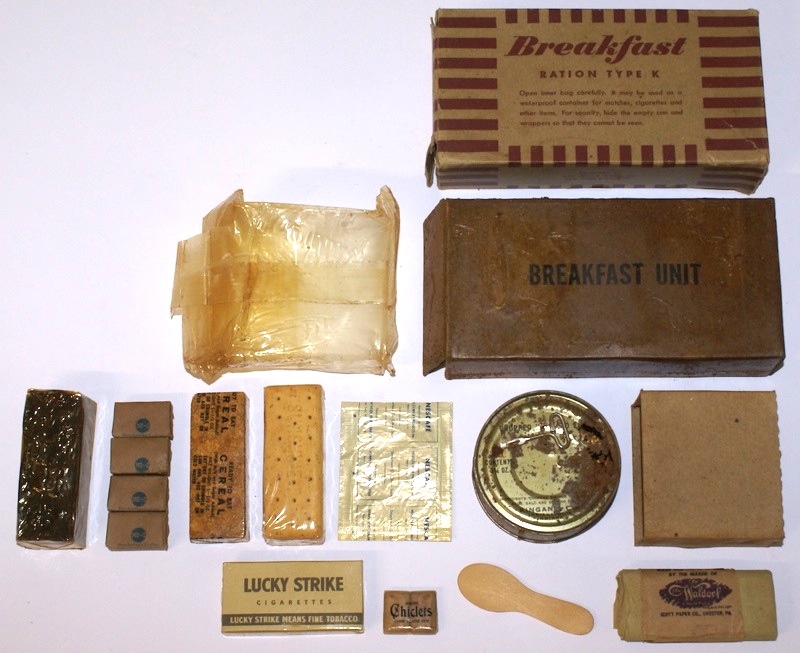
A 1945 Breakfast unit. Note the Chiclets chewing gum, and the sugar tablets made by the Manhattan Coffee &Sugar Co. The Luckies are noteworthy as well. (photo: 1944Supply)
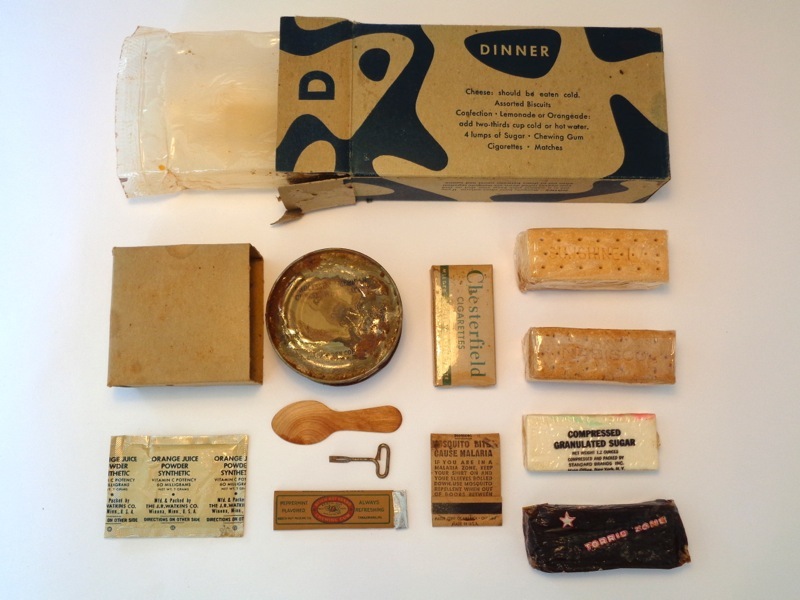
Althought the box still list 4 lumps of sugar, there is an 1.2 oz. block of compressed sugar in this Type IVb Kellogg's Dinner unit. The Milky Way bar kind of liquified over time.
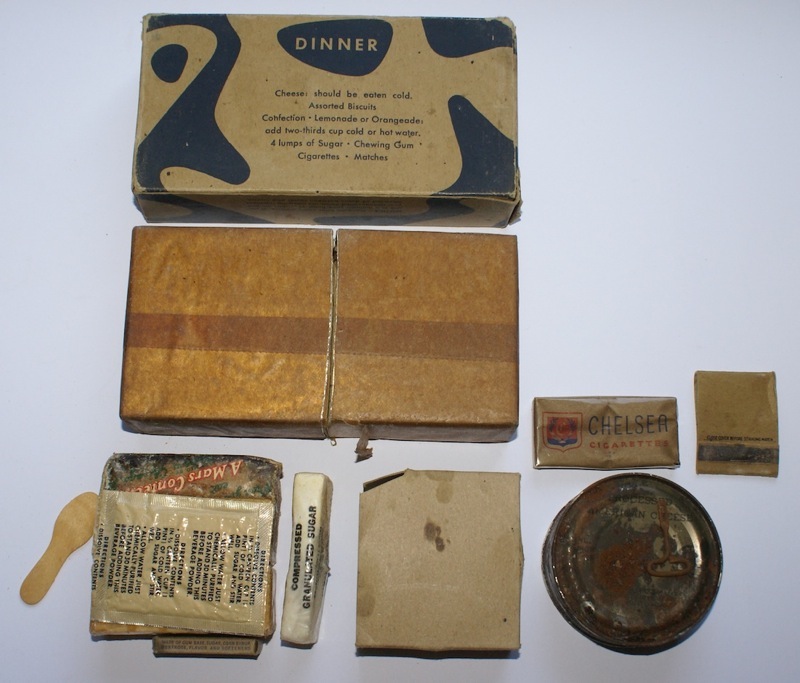
This Type IVb Dinner unit still contains a blank matchbook and a notched sleeve. The inner carton is protected by a kraftpaper/aluminum laminate wrapping. Note the small box that holds two candy coated chewing gum tablets. (photo: 1944Supply)
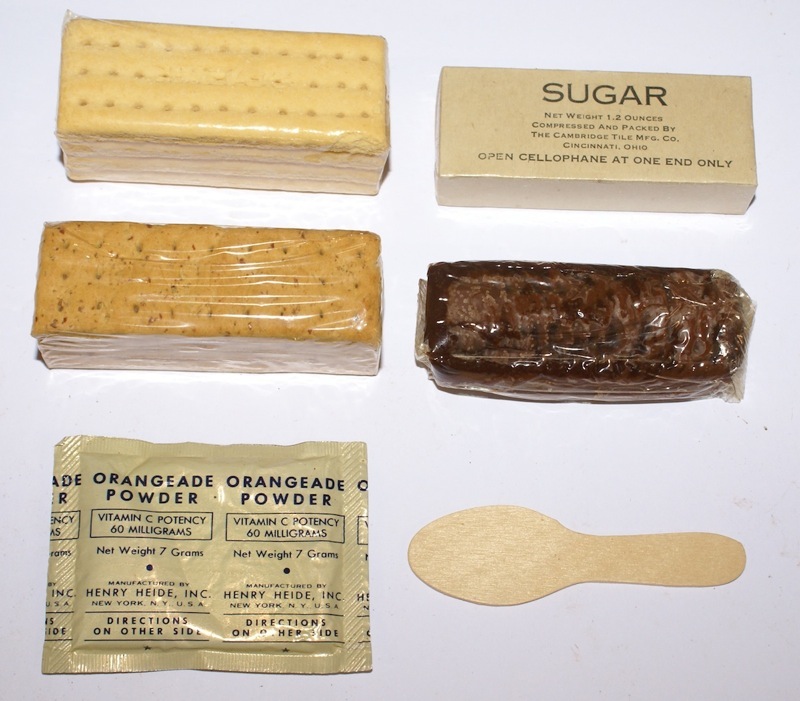
Contents from a mid 1945 Type IVb Dinner unit with a chocolate fudge bar instead of the usual Milky Way or Mars candy bar. (photo: 1944Supply)
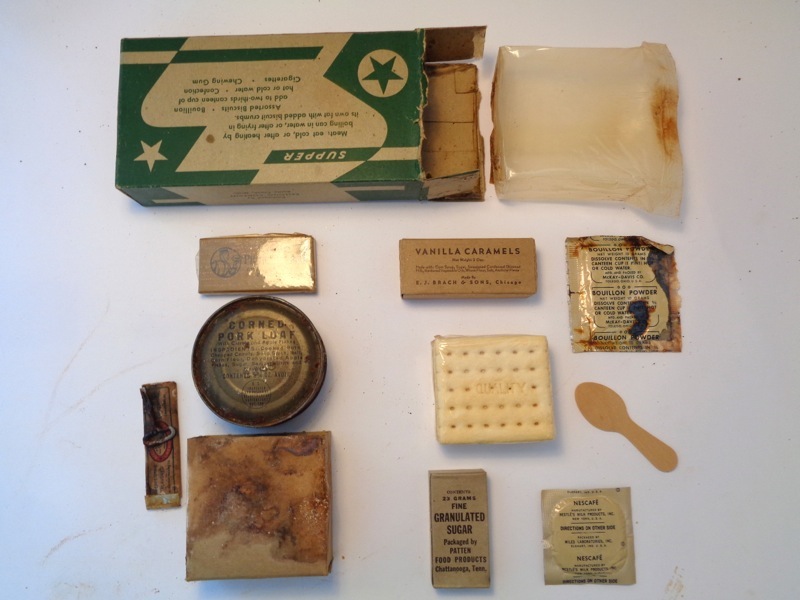
A Kellogg's Type IVb Supper unit with the vanilla flavored caramels. This unit was also packed in a Type IVa outer carton.
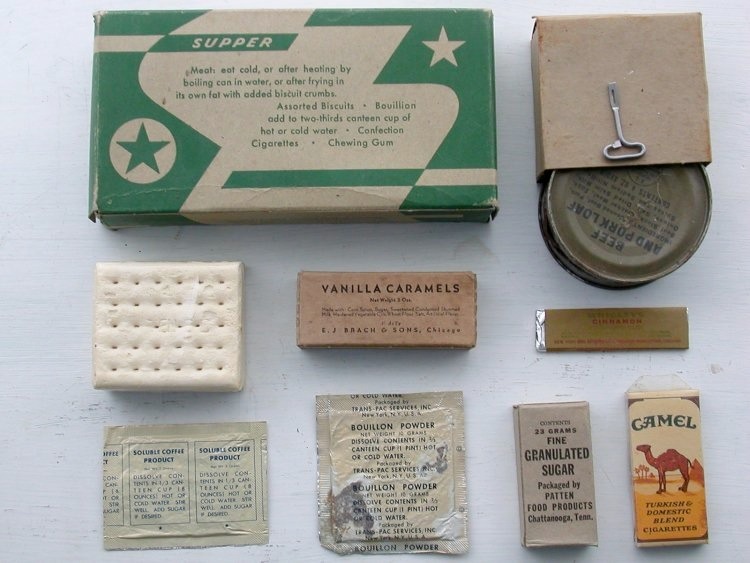
A late Supper unit like the one above also packed in a Type IVa outer carton.
Note that only the bouillon is mentioned as a beverage. The caramels are simply listed as confections.
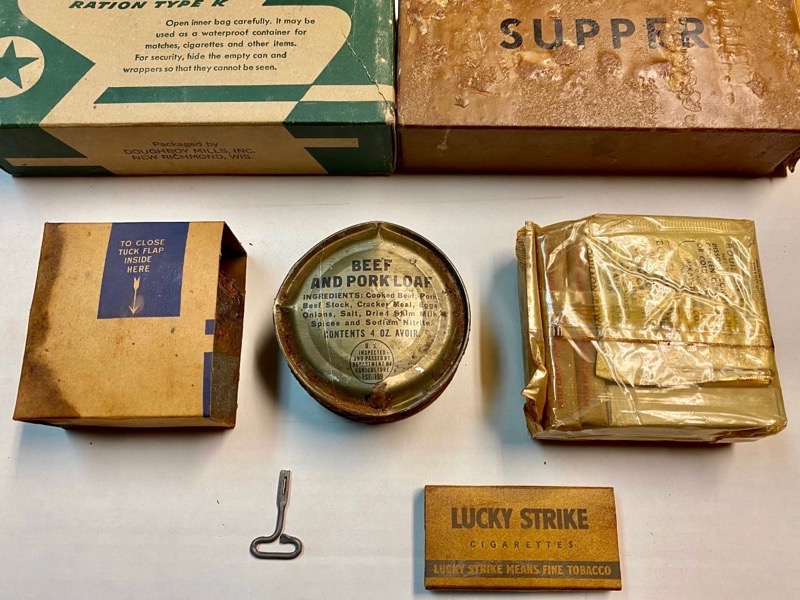
Another Doughboy Mills Inc. packed K Ration with the can sleeve made from left over Dried Eggs packagings. Note the two 1-ounce Sweet Chocolate bars packed inside the cellophane bag. These are the same kind as the two bars pictured below. A package of PK chewing gum is placed inside the bag. (photo courtesy S.J. Schmalstieg)

Contents of a late Supper unit showing two 1-ounce Sweet Chocolate bars as confection. Included within this particular Supper unit is a vial with salt tablets. (photo: 1944Supply)
